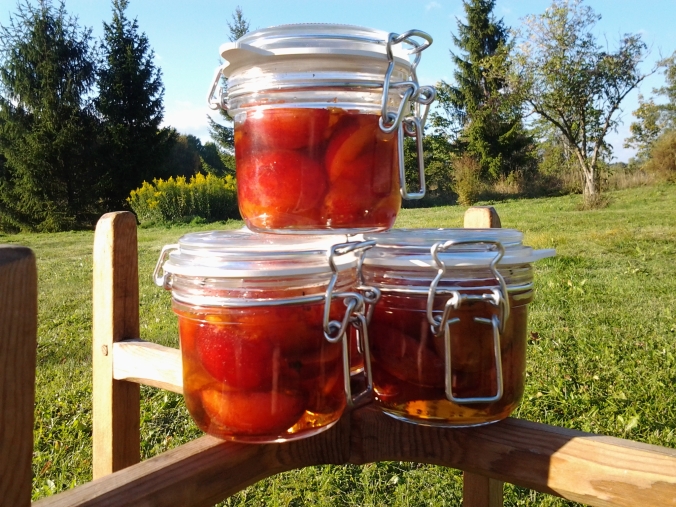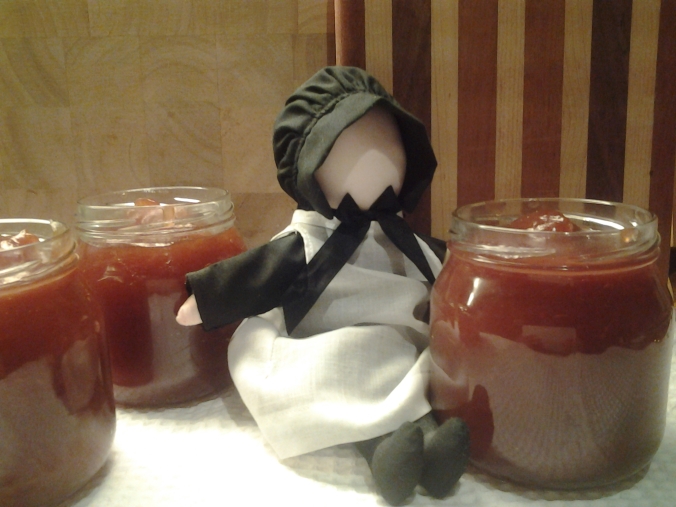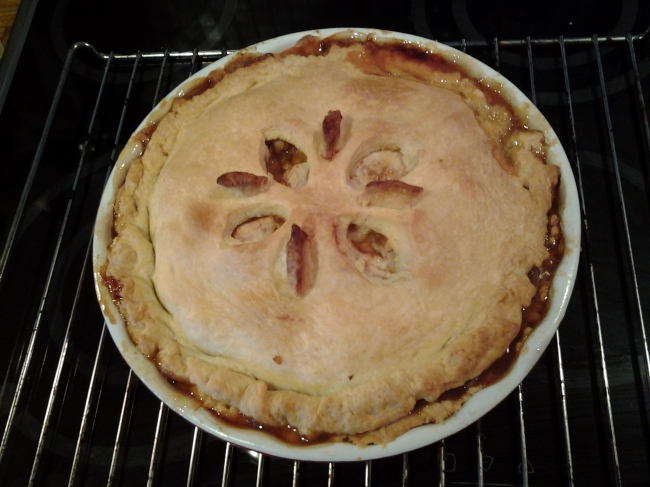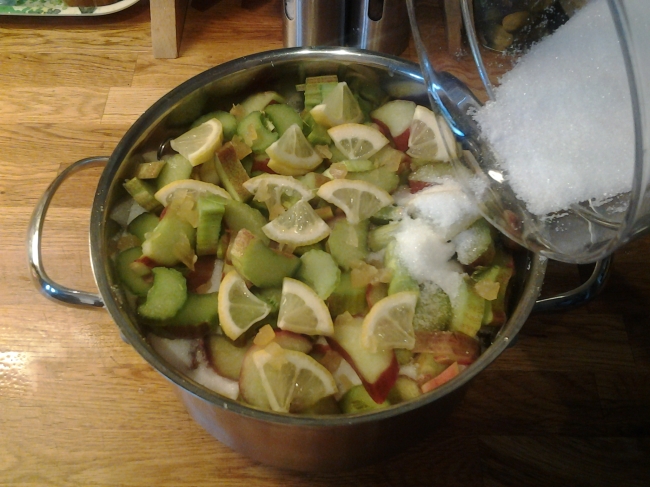Today summer really turned into fall here in Sweden. Far up north they actually had snow and here where we live it was very windy – even stormy – with grey skies and heavy rainfall. We watched the wind grabbing the trees on our property and we realized we had to get out and save the remaining plums from our tree. The cat kept us company as we collected the plums and when we came back inside we had two large bowls full of red and ripe Victoria plums with us. What to do with them? Some went into the freezer (rinse them, cut them in halves and remove the kernels) for the winter. Some will be turned into jam tomorrow. And some of them we couldn’t resist using for making one of the classic american pies: The Deep Dish Plum Pie.
The pie turned out so delicious that we have to share it with you. It was a real treat this rainy day and it is a great way to use the plums on your tree. Start well in advance since the crust needs some time in the refrigerator. You’ll need:
For the crust and lid:
* 2.5 cups (6 dl) flour (vetemjöl)
* 8 oz. (225 gram) of real butter
* 2 gram (2 kryddmått) salt
* 5-6 tablespoons of cold water
For the filling:
* 1 1/2 Quarts (1.5 liter) of plums, cut in halves and with the kernels removed
* 1/4 cup (drygt en halv deciliter) brown sugar (råsocker)
* 1/2 cup (1 1/4 dl) white sugar
* 3-4 tablespoons of Maizena
* 1 teaspoon of ground cinnamon (malen kanel)
* 1/2 teaspoon of vanilla (vaniljsocker)
* 3-4 tablespoons of Madeira wine.
* 3 tablespoons of real butter
For the pie:
* Real butter (softened) for greasing.
* Some sugar and water to sprinkle on the pie before baking.
Start with making the dough for the crust and lid. Mix flour and salt together in a bowl. Add the butter cut in small dices and use your fingers to mix it with the flour. Add the water and quickly work it in making a smooth dough. Split it in two (one for the crust and one for the lid) and let it rest wrapped in saran wrap (plastfolie) in the refrigerator for a couple of hours.
Put the oven on 435 degrees Fahrenheit (225 degrees Celsius). Grease a deep dish (en djup pajform) with butter. Take out one of the doughs from the refrigerator. Use a rolling pin (kavel) to make a crust and cover the dish with it. Put it back in the refrigerator.
Mix together brown and white sugar, salt, Maizena, cinnamon and vanilla. Add the plums and use your hand and mix it together so that the Maizena spreads evenly over the plums. Add the Madeira wine and stir. Take out the pie dish and pour the filling into the crust. Spread the butter in small pieces over it. Take out the second dough and use a rolling pin to make a lid. Cover the pie with it and pinch together the lid and the crust. Use a knife to cut out decorative holes in the lid – this is not only decorative, it also lets the steam out from the pie when it is baked in oven. Sprinkle some additional sugar and some water over the pie.
Bake in the lower rack of the oven for 20 minutes. Then lower the temperature to 390 degrees Fahrenheit (200 degrees Celsius) and let it bake for another 30 minutes. Cover if it tends to get too dark.
Take it out, let it cool off a bit before serving it as it is or with whipped cream or vanilla ice cream. Yum!











